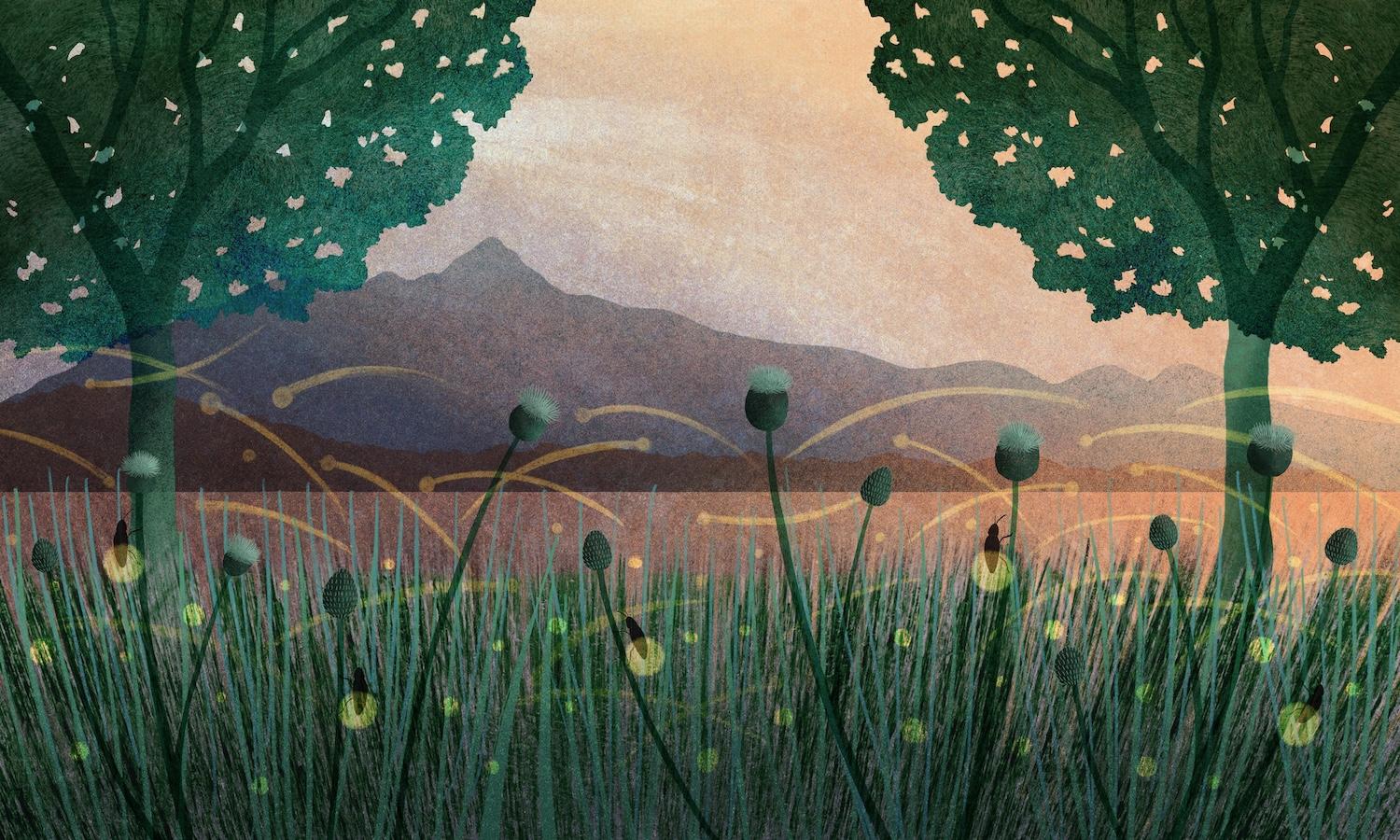
Colorado Firefly Field Guide

“Magic is just science we don’t understand yet,” science fiction author Arthur Clarke famously penned in the 1960s. If that’s true, CU Boulder computer science researchers have been busy studying the fairy tale of fireflies in Colorado.
The work looks romantic, but it’s no picnic: In twilight vistas across the state, doctoral student Owen Martin (PhDCompSci’25) and associate professor Orit Peleg tow cameras and computers to document firefly populations and decode their flash patterns. It’s all part of a longstanding effort to understand firefly communication.
When the scientists discuss their work, locals are often surprised.
“A lot of people here come from places like the Midwest, where they’ve seen fireflies,” Martin told CU Boulder Today in July 2024. “But they don’t know about them in their own backyards.”
That’s why he’s eager to raise what he calls “firefly literacy” in the state.
Fireflies have quietly flickered in Colorado for centuries, though the first formal documentation came in 2016, when naturalist Tristan Darwin Kubik identified a population near Fort Collins. Genetic testing suggested they may represent a previously undocumented species, potentially dubbed Photuris coloradensis.
In 2018, Martin and Peleg began tracking fireflies, which have been documented in at least 19 counties, including near Fort Collins, Loveland, Greeley, Pueblo, Mofat, Divide, Durango and Carbondale.
Why are sightings so rare? Studies show fireflies prefer swampy environments — wetlands, meadows and areas near streams and ponds. Their patchy distribution and brief annual activity window leave many residents unaware of their presence.
As magical as these discoveries are, scientists warn they could be short-lived. Habitat loss, wetland drainage, livestock grazing, urban development and light pollution all pose serious threats.
“They are very special. We have a lot to learn from them, but also, they are under threat from environmental issues,” Peleg told CU Boulder Today.
Residents can help to protect these luminescent creatures by assisting with flash data collection, supporting habitat restoration, staying on marked trails and turning of outdoor lights from June to August, especially near wetlands.
“Biodiversity is magical,” Martin added. “And if we don’t alert the right people that these cool fireflies, that are really rare, are in this habitat, we’ll lose them forever. And then you lose the kind of wonder and magic they bring to you.”
To spot them, keep your eyes peeled from mid-to-late June through mid-July, usually after 9 p.m. in swampy or wetland areas.
Illustration by Sunnu Rebecca Choi

